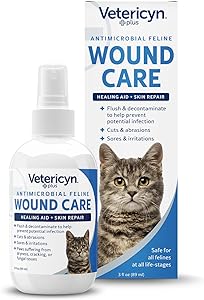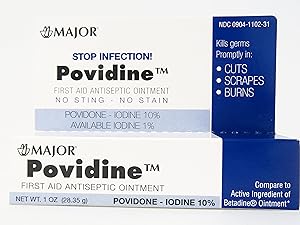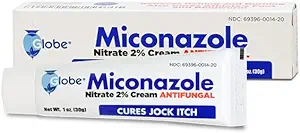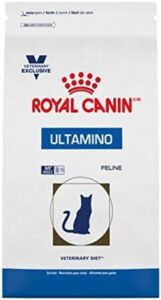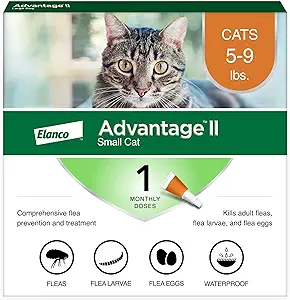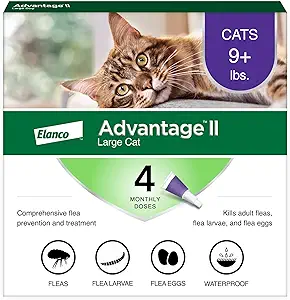What causes red, inflamed skin on your cat's chest?
Red and inflamed skin can develop on your cat’s chest due to a certain cause. We discuss the possible causes later in this text. The cells in the skin in that affected area are damaged. This causes substances to be released from those cells and settle in the space between the cells. The substances are then released into the blood, causing your cat’s immune system to know that something is wrong somewhere in his body.
In this way, a whole system of mechanisms is set in motion to repair the damage in the red inflamed skin on your cat’s chest. And one of those mechanisms is the widening of the blood vessels in the skin of the inflamed area. In this way, many repairing substances are brought to that location through the blood.
Because the blood vessels are wide open and there is a relatively large amount of blood in that piece of skin, it looks red and inflamed in that area of the chest. An inflammatory response also occurs to clear away the damaged cells so that new healthy cells can emerge. You should not confuse an inflammatory response with an infection. An infection involves a (usually bacterial) contamination of damaged skin. An inflammatory reaction can be caused by an infection, but it can also occur when the skin is damaged without a wound. An inflammatory response therefore arises from within your cat to clean up damaged tissue. An infection originates from outside. But an infection always causes inflammation because the infection also damages the tissues.
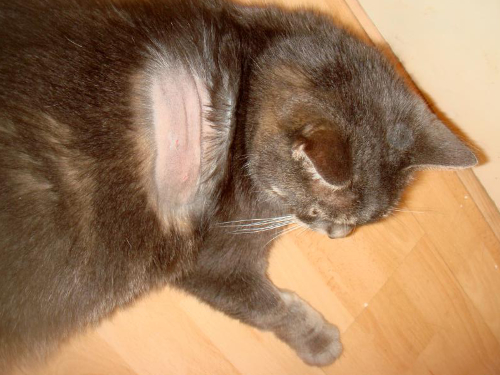
Causes of red and inflamed skin on your cat's chest
In any case, if there is a red and inflamed skin on your cat’s chest, damage has occurred to your cat’s skin. This could be caused by a vehicle accident, a fight with another cat or a dog. But it can also arise as a result of an infection. We are talking about an infection when bacteria enter already damaged skin and damage the skin even further. But a fungal infection can also cause a healthy skin to be damaged. A virus can also damage the skin, but this does not happen often in cats. But skin inflammations can also arise because problems arise in the skin itself. For example, in the event of an allergic reaction or autoimmune problems.
What can you do about that red, inflamed skin?
We understand very well that you just want to know quickly what you can do about that red, inflamed skin on your cat’s chest. Reading through a long text looking for an answer simply takes too long.
Sorry, we have to disappoint you. You can only treat red, inflamed skin on your cat’s chest properly by solving the cause. The red, inflamed skin is a symptom of another underlying problem. And that problem must be solved so that the red and inflamed skin can heal itself. Do you really not feel like reading the entire text? Then you have the best chance of healing with the following wound care treatment. But it is wiser to read on and see if you can find out the cause of the red, inflamed skin on your cat’s chest.
Treating injuries
An accident in your cat can happen from one moment to the next. The injury is therefore very sudden. If there is a clear wound on your cat’s chest, you can read more about it on the relevant page. But if there is a bruise to the skin, the top layer of skin is still intact, but the underlying tissue is bruised and those cells are damaged, causing a red inflamed skin on his chest. This is different from an abrasion or other wound.
Your cat can easily repair this bruise on his chest on its own. But the skin is very sensitive to a bacterial infection at that time. It is best to rub the skin with honey ointment. This ensures accelerated wound healing and also has an anti-bacterial effect. This prevents an infection while your cat can take care of cleaning up the damage itself. You should apply the ointment to the red skin 2-3 times a day for 7 days. After those 7 days the spot should have almost disappeared.
How do you treat a skin infection?
Damaged skin, as mentioned above, can easily become infected. This means that bacteria become trapped in the damaged skin. They love it there and are going to multiply nicely. They only cause more damage to the skin. The red, inflamed skin on his chest therefore becomes increasingly redder. But with an infection, the skin also becomes wet and sometimes you even see pus on it. However, your cat usually licks this clean, so the chance is not very high that you’ll see this.
The best way to treat a skin infection is to apply iodine ointment twice a day. Usually 5 days is sufficient, but longer application is also allowed. The disadvantage of iodine, however, is that if your cat licks it, he can get diarrhea. So make sure he wears a medical pet shirt during that period.
A fungal infection
Unfortunately, it is sometimes quite difficult to tell the difference between a bacterial infection and a fungal infection. A bacterial infection usually spreads faster than a fungal infection. And with a fungal infection you often see a round red ring that becomes larger over a few days. That is why we often call a fungal infection a ringworm infection. If the iodine treatment does not work, there is a chance that it is a fungal infection. In that case, you can treat the red, inflamed skin on your cat’s chest with an athlete’s foot ointment that contains Miconazole. You should also apply this to the area twice a day, especially on the edge. It can take a few weeks to completely resolve the red, inflamed skin on your cat’s chest.
Allergy as a cause of red, inflamed skin on your cat's chest
If there is an allergy, we usually see several spots on your cat’s body. And in most cases your cat is also very itchy. As a result of the itching, your cat may scratch itself and continue to do so for so long that its skin becomes damaged. Bacteria can then grow in this damage. We call this a “secondary bacterial infection”. So a bacteria is the result of another problem, in this case the allergy.
Multiple allergic reactions are possible in this case. It can be a food allergy, flea allergy, atopic allergy and contact allergy. We explain them one by one below.
A food allergy
A food allergy is caused by ingredients used in your cat’s food or treats. In most cases there is an allergic reaction to proteins that come from a specific animal species. For example beef or chicken. But we also regularly see cats that have an allergic reaction to a carbohydrate source such as wheat, rice or potato. But how do you find out whether he is allergic to which part of his diet or not?
In fact, we don’t need to know that. We just want to know whether his complaints will disappear if he no longer comes into contact with substances to which he can react allergically. In other words, we want to know whether the cause of the red, inflamed skin on his chest is diet or whether there is another allergy at play. And we can find out with the next special catfood.
The proteins and carbohydrates have been made so small in a certain way that they no longer “fit” your cat’s immune system. In this way, the allergic reaction cannot progress further. While you are doing this food allergy test, your cat should absolutely not eat anything other than this kibble. So no treats or things from the refrigerator. Just those special kibbles. Unfortunately, it takes 4 weeks for all the old substances to disappear from his body. And so you will only see results after 4 weeks at the earliest. Do you see no results after 8 weeks? Then unfortunately it won’t happen ever. In that case there is no food allergy. Has his skin healed? Then there is a food allergy. You can give him this special food for life. But you can also test other foods that are “hypoallergenic”.
A flea allergy
A flea allergy very rarely only causes symptoms in the chest. With a flea allergy we often see a bald, crusty lower back near the base of the tail. However, it is possible. A flea allergy does not mean that your cat is bothered by the jumping of fleas. No, he has been itching for 10 days due to an allergic reaction to the saliva that only 1 flea could have given him. With a flea allergy you usually hardly see any fleas at all. Structurally administering a good flea product is the solution for your cat. In case of advantage, administer one pipette in his neck once a month.
An atopic allergy
The red, inflamed skin on your cat’s chest can also be caused by an atopic allergy in your cat. We also call this an atopy. In that case there is an allergic reaction to things in the air. So tree pollen or grass pollen. Or a dust mite allergy. Characteristic of a tree pollen or grass pollen allergy is that the symptoms only occur in the spring and summer, every year. But in late autumn and winter your cat is free of symptoms.
Inflammations occur in your cat’s skin. This is possible on any part of his body, but in many cats we see this especially on the head and neck. In many cats we also see red, inflamed skin on the chest.
Unfortunately, it is not possible to treat this yourself. To make a diagnosis, your vet can take some blood from your cat and send it out for testing. In the vast majority of cases, medication will unfortunately still have to be chosen afterwards. That is why in that case a veterinarian sometimes skips the test and immediately prescribes medication. Nevertheless, the blood test is wise to do. Suppose you have a dust mite allergy, you can significantly reduce the amount of dust mites by taking a leather sofa and replacing fabric curtains with other window shades. And you can also install an air purifier in your home. These adjustments will cause your cat to have significantly fewer symptoms and therefore require less, or hopefully no more, medication.
A contact allergy
When there is a contact allergy, your cat has an allergic reaction to something he often lies on. So his blanket or a certain surface. Very often this involves a cleaning agent or detergent. Is the red, inflamed skin exactly on a part of the body where it often lies down on? Then remove his blanket and wash everything with just water. That should solve the problem.
Autoimmune diseases and red, inflamed skin on your cat's chest
With an autoimmune disease, your cat’s immune cells attack its own body cells. These immune cells mistakenly think that the body’s own cells are an enemy that it must eliminate. This may cause red, inflamed skin to develop on your cat’s chest. Fortunately, this does not happen very often in cats. To determine this, a small piece of tissue must be taken from the inflammation under anesthesia. This is then examined in a laboratory. If it turns out to be an autoimmune condition, your cat will have to receive lifelong immune suppressant medication. Your vet will guide you in this.
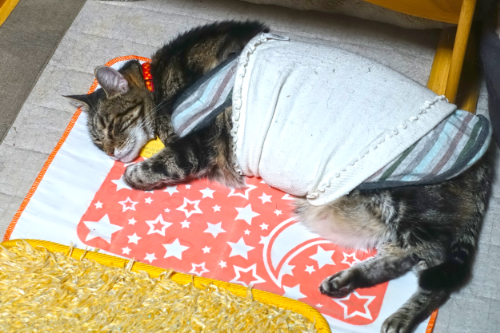
Good luck!
Well done, you have completely read the article! Hopefully you have found the solution to the red inflamed skin on your cat’s chest. Good luck for the both of you!

